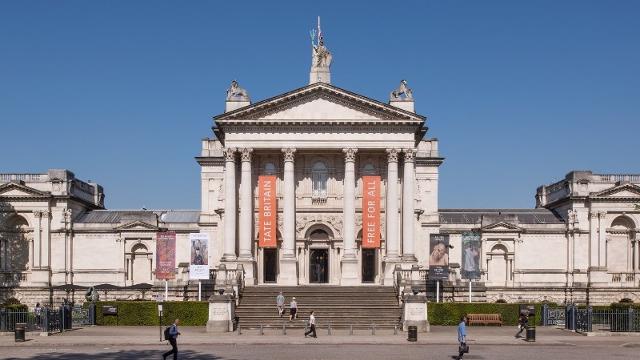Tate Britain is an art museum opened on 1897 at Millbank in the City of Westminster in London is the oldest of the chain. It is part of the Tate network of galleries in England, with Tate Modern, Tate Liverpool and Tate St Ives. It houses a substantial collection of the art of the United Kingdom since Tudor times, and in particular has large holdings of the works of J. M. W. Turner, who bequeathed all his own collection to the nation. It is one of the largest museums in the country.

The gallery is situated on Millbank, on the site of the former Millbank Prison. However, from the start it was commonly known as the Tate Gallery, after its founder Sir Henry Tate, and in 1932 it officially adopted that name. Before 2000, the gallery housed and displayed both British and modern collections, but the launch of Tate Modern saw Tate's modern collections move there, while the old Millbank gallery became dedicated to the display of historical and contemporary British art. As a consequence, it was renamed Tate Britain in March 2000.
Tate Britain is the national gallery of British art, having a good comprehensive collection from 1500 to till date.

John Constable, Flatford Mill (Scene on a Navigable River)

William Blake, Satan Smiting Job with Sore Boils

J. M. W. Turner, Snow Storm – Steam-Boat off a Harbour's Mouth
Sir John Everett Millais, Ophelia
Anna Lea Merritt, Love Locked Out
James Abbott McNeill Whistler, Nocturne: Blue and Gold – Old Battersea Bridge

David Bomberg, The Mud Bath
When the Pre-Raphaelite painter and President of the Royal Academy, John Everett Millais, died in 1896, the Prince of Wales chaired a memorial committee, which commissioned a statue of the artist. This was installed at the front of the gallery in the garden on the east side in 1905. On 23 November that year, The Pall Mall Gazette called it "a breezy statue, representing the man in the characteristic attitude in which we all knew him".

Statue of John Everett Millais by Thomas Brock at Tate Britain
In 1953, Tate Director, Sir Norman Reid, attempted to have it replaced by Rodin's John the Baptist, and in 1962 again proposed its removal, calling its presence "positively harmful". His efforts were frustrated by the statue's owner, the Ministry of Works. Ownership was transferred from the Ministry to English Heritage in 1996, and by them in turn to the Tate. In 2000 the statue was removed to the rear of the building.